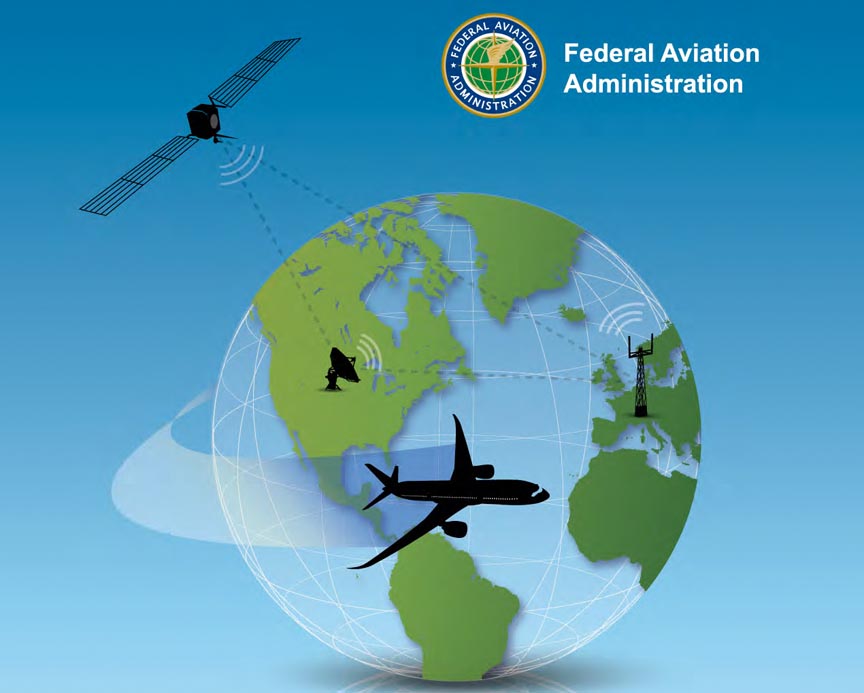The prospect of budget cuts further slowing the modernization of the nation’s air traffic system is fueling interest in privatizing the country’s aviation infrastructure.
The prospect of budget cuts further slowing the modernization of the nation’s air traffic system is fueling interest in privatizing the country’s aviation infrastructure.
“Conversations are starting to be held in a lot of different rooms that maybe we need to organize this differently,” Gerald Dillingham, director for civil aviation issues at the U.S. Government Accountability Office told a conference in Washington last week. “Maybe the [Federal Aviation Administration (FAA)] may not be the organization that’s in charge of modernizing the system. Maybe they should be a safety organization.”
The privatization approach has been “very, very effective” and has, in most cases, lowered costs, Nancy Graham, a former executive from the FAA’s air traffic organization told Inside GNSS. “What is clear in the research, and the observation of others that have become privatized, is it provides a business sense and it provides business tools that enable private floating of bonds and borrowing of money that enables business decisions.”
Although a number of nations have privatized, the example sited most frequently by experts at the NextGen Ahead conference was NAV CANADA, a private sector corporation launched in 1996. It owns and operates Canada’s civil air navigation service and provides air traffic control, flight information, weather briefings, aeronautical information, airport advisory services, and electronic aids to navigation.
According to its web site, NAV CANADA has seven area control centers and 41 control towers as well as 58 flight service stations and a network of more than 1,000 ground-based aids to navigation.
If you privatize “you can engage with the (aviation) industry, which is a business, like a business . . . how can you deliver on time when you have no reliable source of business tools or reliable sense of funding,” said Graham, who was expressing her personal opinion and not that of her employer the International Civil Aviation Organization (ICAO), where she is director of the Air Navigation Bureau.
Members of Congress may be ready to consider a change — even one as big a privatization, staffers said.
Both Bill Shuster, R-Pennsylvania, chairman of the House Transportation and Infrastructure committee and Rep. Frank A. LoBiondo, R-New Jersey, chairman of its Aviation Subcommittee, understand that the United States must modernize air traffic control, said Holly Woodruff Lyons, Republican staff director and senior counsel for the Aviation Subcommittee.
“But they are also aware of serious concerns with FAA’s ability to implement NextGen,” she added, referring to the large, complex FAA program to modernize the nation’s air traffic management system, which will depend heavily on GNSS-based navigation and tracking of aircraft. “In fact, Chairman LoBiondo has said ‘It is time to hit the reset button. It is time to make sure we are in the headed in the right direction.’”
Although Rep. Rick Larsen (D-Wash.), the Aviation Subcommittee’s ranking minority member has not used the word “reset,” said Aviation Subcommittee Democratic Staff Director Giles Giovinazzi, the FAA has failed to follow though on certain NextGen design decisions, and the program is already half way through its planned time schedule. “The Democratic members know that the system needs to be modernized, but I think there is a candid acknowledgement of the budget situation.”
If lawmakers decide to move toward corporatization of FAA’s air traffic mission, the agency’s reauthorization bill could serve as the vehicle.
“In the lead up to the next reauthorization the chairman is very interested in thinking big,” said Woodruff Lyons. “There are lots of ideas, and he wants to hear them all. I haven’t heard from anybody yet on thinking that big — but that’s what we welcome. We welcome hearty conversation on how do we get there. How do we dig in and get this done. . . . We’ve got to get this done.”
Woodruff Lyons said that the budget pressure would continue though there were no serious conversations on the Hill at this point about changing the schedule for NextGen. Sequestration is the law, she said, “and I don’t see it going away any time soon.”
If the schedule does slip further, the FAA risks losing the companies that can help NextGen succeed, said Hal Adams, chief operating officer of Accord Technology of Phoenix, Ariz.
The FAA has encouraged startups to get out there, said Adams, to make it competitive to get the market price of avionics down. If they drag it out and those companies’ return on investment goes away — and with it their investors — those firms may not have the staying power to stay in the business, he added.
“If the people who would buy that end product see things moving to the right [and being delayed], they just put off the decision, said Adams. “Because the competition is not about me and Garmin and Collins and Honeywell — it’s about ‘do nothing.’”
But Congress may be ready to step up and do something about the issues slowing down NextGen — even if that means revamping the organization, Woodruff Lyons hinted to Inside GNSS. “The chairman wants to do something big.”






